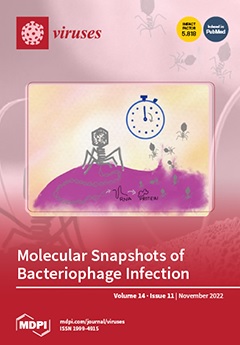Ver ítem
- xmlui.general.dspace_homeCentros e Institutos de InvestigaciónCICVyA. Centro de Investigación en Ciencias Veterinarias y AgronómicasInstituto de VirologíaArtículos científicosxmlui.ArtifactBrowser.ItemViewer.trail
- Inicio
- Centros e Institutos de Investigación
- CICVyA. Centro de Investigación en Ciencias Veterinarias y Agronómicas
- Instituto de Virología
- Artículos científicos
- Ver ítem
Feasibility of polyclonal avian immunoglobulins (IgY) as prophylaxis against human norovirus infection
Resumen
Background: Human norovirus (HuNoV) is the leading viral cause of diarrhea, with GII.4 as the predominant genotype of HuNoV outbreaks globally. However, new genogroup variants emerge periodically, complicating the development of anti-HuNoV vaccines; other prophylactic or therapeutic medications specifically for HuNoV disease are lacking. Passive immunization using oral anti-HuNoV antibodies may be a rational alternative. Here, we explore the feasibility
[ver mas...]
Background: Human norovirus (HuNoV) is the leading viral cause of diarrhea, with GII.4 as the predominant genotype of HuNoV outbreaks globally. However, new genogroup variants emerge periodically, complicating the development of anti-HuNoV vaccines; other prophylactic or therapeutic medications specifically for HuNoV disease are lacking. Passive immunization using oral anti-HuNoV antibodies may be a rational alternative. Here, we explore the feasibility of using avian immunoglobulins (IgY) for preventing HuNoV infection in vitro in a human intestinal enteroid (HIE) model. Methods: Hens were immunized with virus-like particles (VLP) of a GII.4 HuNoV strain (GII.4/CHDC2094/1974/US) by intramuscular injection. The resulting IgY was evaluated for inhibition of binding to histo-blood group antigens (HBGA) and viral neutralization against representative GII.4 and GII.6 clinical isolates, using an HIE model. Results: IgY titers were detected by three weeks following initial immunization, persisting at levels of 1:221 (1:2,097,152) from 9 weeks to 23 weeks. Anti-HuNoV IgY significantly (p < 0.05) blocked VLP adhesion to HBGA up to 1:12,048 dilution (0.005 mg/mL), and significantly (p < 0.05) inhibited replication of HuNoV GII.4[P16] Sydney 2012 in HIEs up to 1:128 dilution (0.08 mg/mL). Neutralization was not detected against genotype GII.6. Conclusions: We demonstrate the feasibility of IgY for preventing infection of HIE by HuNoV GII.4. Clinical preparations should cover multiple circulating HuNoV genotypes for comprehensive effects. Plans for animal studies are underway.
[Cerrar]

Autor
Artman, Chad;
Idegwu, Nnebuefe;
Brumfield, Kyle D.;
Lai, Ken;
Hauta, Shirley;
Falzarano, Darryl;
Parreño, Gladys Viviana;
Yuan, Lijuan;
Geyer, James D.;
Goepp, Julius G.;
Fuente
Viruses 14 (11) : 2371 (2022)
Fecha
2022-11
Editorial
MDPI
ISSN
1999-4915
Formato
pdf
Tipo de documento
artículo
Palabras Claves
Derechos de acceso
Abierto
 Excepto donde se diga explicitamente, este item se publica bajo la siguiente descripción: Creative Commons Attribution-NonCommercial-ShareAlike 2.5 Unported (CC BY-NC-SA 2.5)
Excepto donde se diga explicitamente, este item se publica bajo la siguiente descripción: Creative Commons Attribution-NonCommercial-ShareAlike 2.5 Unported (CC BY-NC-SA 2.5)


